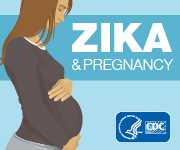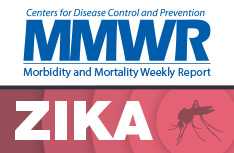Guidance for Areas with Local Zika Virus Transmission in the Continental United States and Hawaii
CDC has issued guidance for travel, prevention, testing, and preconception counseling related to risks for pregnant women and couples considering conception in areas of active Zika virus transmission in the continental United States and Hawaii. CDC has identified two types of geographic areas to describe where Zika virus-related domestic guidance applies: Zika active transmission areas (designated as red areas) and Zika cautionary areas (designated as yellow areas). The recommendations in the tables below are based on the CDC Zika Interim Response Plan, May 2017.
Zika Virus Travel Guidance for Continental United States and Hawaii
Red Areas
A Zika active transmission (red) area is a geographic area where local, state, and CDC officials have identified the presence of confirmed, multi-person local mosquito-borne transmission and have determined that the intensity of Zika virus transmission presents a significant risk of contracting mosquito-borne Zika and poses a risk to pregnant women and blood and tissue safety.
Yellow Areas
A Zika cautionary (yellow) area is a geographic area where local mosquito-borne transmission has been identified and pregnant women and blood and tissue safety are at some undetermined risk, but evidence is lacking on whether the intensity of transmission is widespread and sustained.
Recommendations for Red and Yellow Areas
Travel
Red Areas
- Pregnant women should not travel to red areas.
- Women and men who are planning to conceive in the near future should avoid nonessential travel to red areas.
Yellow Areas
- Pregnant women should consider postponing travel to yellow areas.
- Healthcare providers (HCPs) should discuss reproductive life plans with patients who are planning to conceive in the near future about the lower likelihood of Zika infection in yellow areas compared to red areas and the limited information about periconceptional infection risk (see “preconception counseling, ongoing exposure” below).
Prevention
- Pregnant women and their partners who live in or travel to red or yellow areas should be counseled to consistently and correctly use condoms every time they have sex (including vaginal, anal, and oral sex) to prevent Zika virus infection or they should not have sex during the pregnancy.
- Couples in which one or both partners have had exposure1 who want to reduce their risk for spreading Zika through sex to the uninfected partner should be advised to use condoms consistently and correctly or abstain from sex for
- At least 8 weeks after symptom onset or last possible Zika virus exposure, (if only the woman was exposed), or
- At least 6 months after symptom onset or last possible Zika virus exposure (if the man was exposed)
- If couples are asymptomatic and possible exposure to Zika is ongoing, Healthcare providers should discuss reproductive life plans with their patients (See “Preconception counseling” below)
- All women and men who live in or travel to red or yellow areas should be advised to remain aware of Zika virus transmission and strictly follow steps to prevent mosquito bites.
- All travelers to red or yellow areas should be advised to use insect repellent for 3 weeks after returning home to prevent passing Zika to mosquitoes that could infect others.
- All travelers to red or yellow areas should be counseled on the potential consequences of Zika virus infection to the fetus during pregnancy and the traveler’s role in preventing transmission to pregnant women in their communities.
Testing
Symptomatic
- Pregnant women should be offered testing for Zika virus infection. There are limitations to the interpretation of laboratory tests done on specimens drawn more than 12 weeks after the start date of the exposure.
- Men and non-pregnant women should be tested2 for Zika virus infection based on time of evaluation relative to symptom onset. There are limitations to the interpretation of laboratory tests done on specimens drawn more than 12 weeks after the start date of the exposure.
Asymptomatic with ongoing exposure3
Asymptomatic without ongoing exposure
- Jurisdictional recommendations may take into account the epidemiology of Zika virus transmission and other epidemiologic considerations (e.g., seasonality and mosquito surveillance and control factors) in areas with risk for Zika virus transmission. Therefore, jurisdictions might include a routine recommendation to test asymptomatic pregnant women, particularly in areas where local, state, and CDC officials have identified the presence of confirmed, multi-person local mosquito-borne transmission and have determined that the intensity of Zika virus transmission presents a significant risk of Zika virus infection, posing a risk to pregnant women and blood and tissue safety (red areas). Please contact your state health department for state-specific guidance. Testing is not recommended for men and non-pregnant women.4
Please note: Healthcare providers should contact their state, local, or territorial health department to coordinate testing and interpret results. Healthcare providers should discuss the limitations of laboratory tests used to diagnose Zika virus infection with their patients.
Preconception Counseling
With Zika symptoms and/or diagnosis
Red and Yellow
Women and men who are planning to conceive in the near future should be advised to wait at least 8 weeks if a woman had Zika symptoms and/or diagnosis, and at least 6 months if a man had Zika symptoms and/or diagnosis, before attempting conception.
No Zika symptoms, and without ongoing exposure
Red
Women and men who are planning to conceive in the near future should be advised to wait at least 8 weeks if only the woman was exposed and at least 6 months if the man was exposed after the end date of the last possible exposure before attempting conception.
Yellow
Women and men who are planning to conceive in the near future should consider waiting at least 8 weeks if only the woman was exposed and at least 6 months if the man was exposed after the end date of the last possible exposure before attempting conception.
No Zika symptoms and with ongoing exposure
Red and Yellow
- Women and men who are planning to conceive in the near future should be counseled on the possible risk for Zika virus infection during the periconceptional period and about the potential consequences of Zika virus infection to the fetus during pregnancy. Healthcare providers should discuss reproductive life plans with patients and review factors that might influence pregnancy timing (e.g., duration of Zika virus outbreak, fertility, age, reproductive history, medical history, personal values and preferences).
- Women and men who live in or travel to red or yellow areas should be advised to remain aware of Zika virus transmission and strictly follow steps to prevent mosquito bites.
Please note: There are limited data about the persistence of Zika virus RNA in body fluids and the risk for adverse pregnancy outcomes associated with maternal Zika virus infection around the time of conception is currently unknown. Therefore, some couples in which one or both partners have had possible Zika virus exposure might choose to wait longer or shorter than the recommended period to conceive, depending on individual circumstances (e.g., age, fertility, details of possible exposure) and risk tolerance. Healthcare providers should work with couples to help them make informed decisions.
1 An exposure means that a person has lived in, traveled to, or had sex without a condom with someone who lived in or traveled to a designated red or yellow area.
2 Local health officials should determine when to implement testing based on information about levels of Zika virus transmission and laboratory capacity, in accordance with CDC recommendations.
3 People with ongoing exposure include those who live in or frequently travel (e.g., daily, weekly) to a red or yellow area.
4 Zika virus testing is not recommended for asymptomatic non-pregnant persons with possible exposure to Zika virus because there is potential for false reassurance in the following ways: 1) a blood test may be performed after the virus is no longer in the blood but could still be present in semen, 2) the antibody test may be performed early after infection when the antibody levels are not yet high enough to be detected, 3) the antibody test may be performed later after infection when the antibody levels have fallen to undetectable levels, and 4) a test result can sometimes be negative in the setting of true infection.
- Page last reviewed: August 29, 2017
- Page last updated: August 29, 2017
- Content source:





 ShareCompartir
ShareCompartir